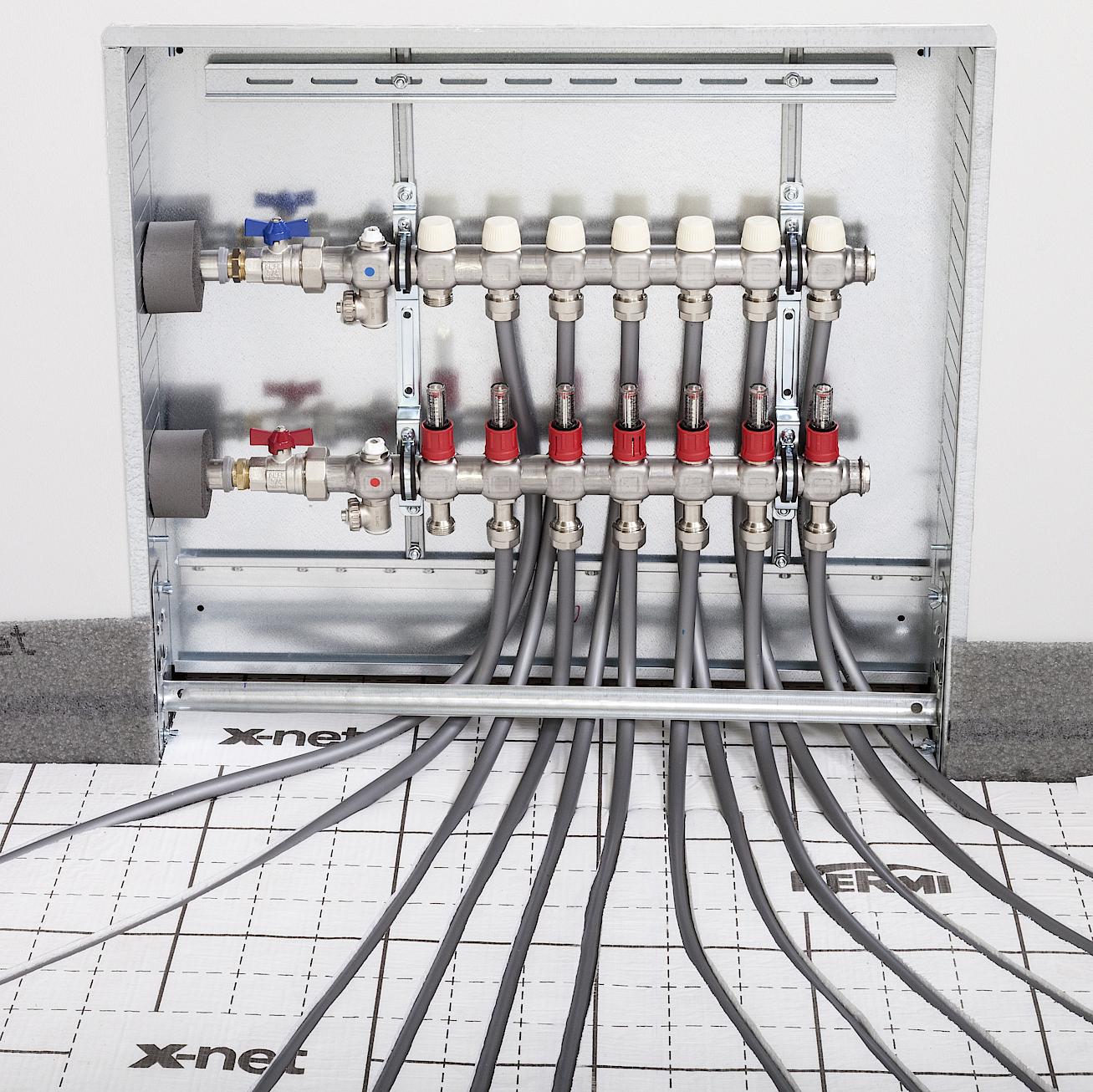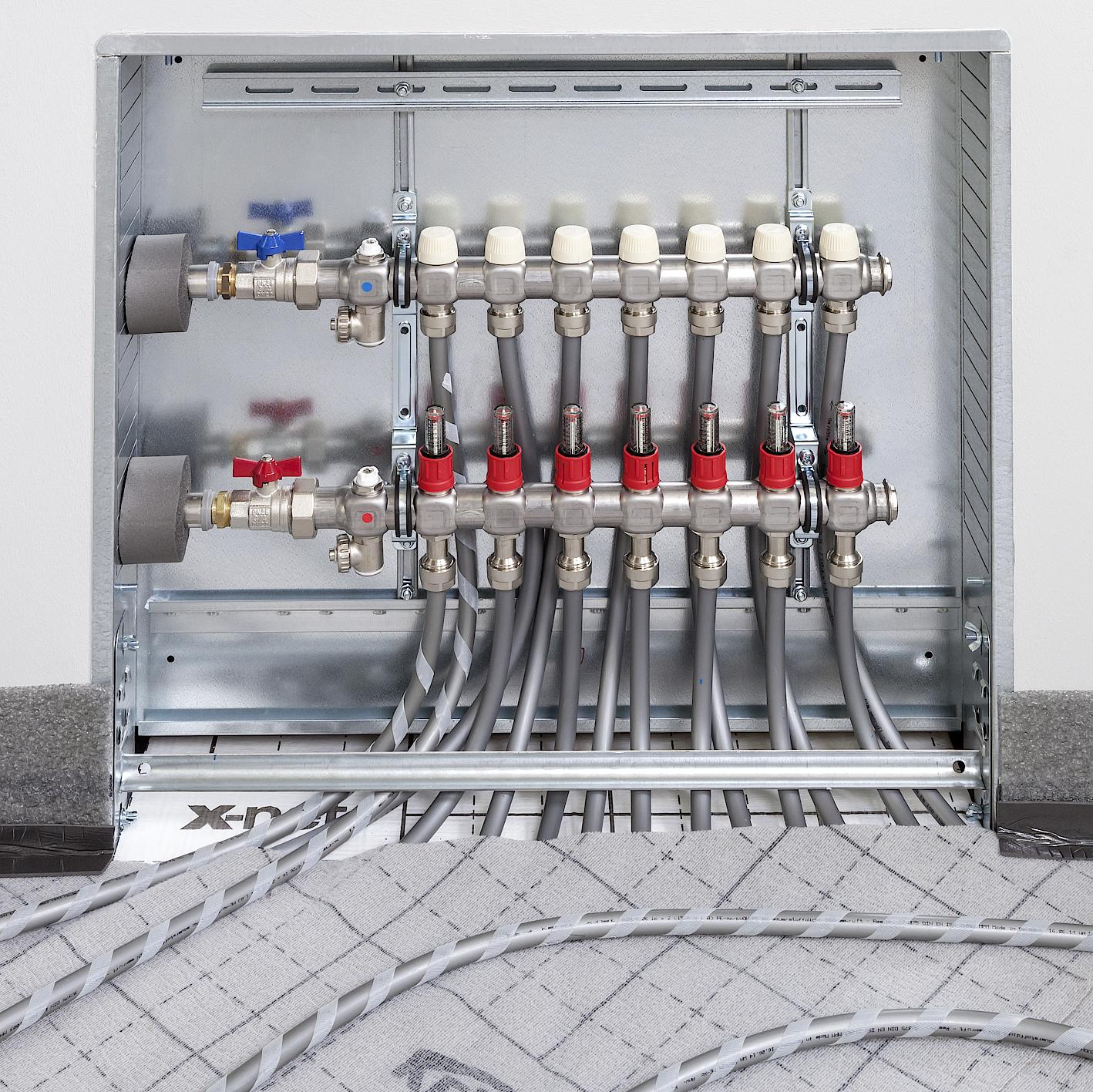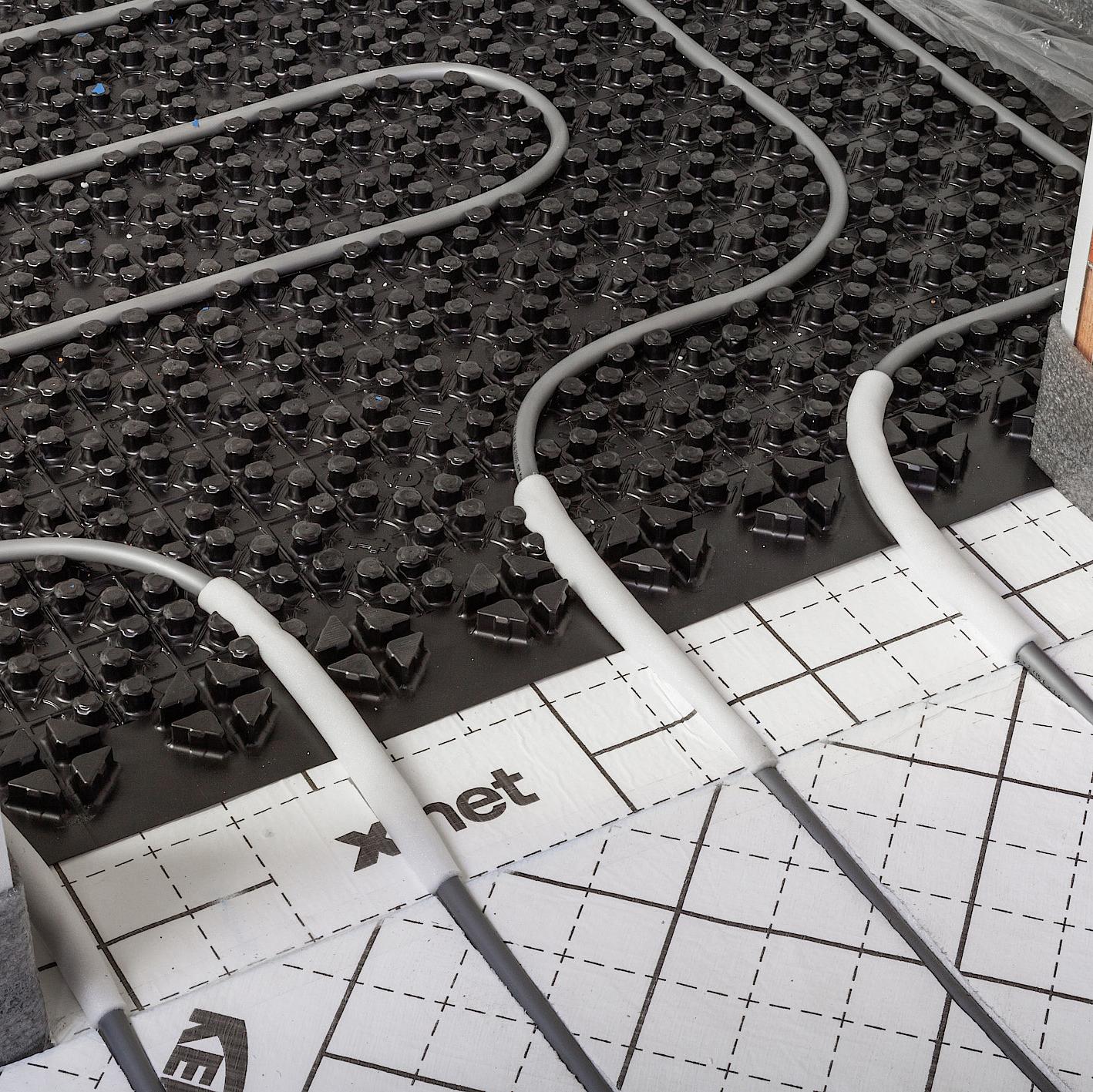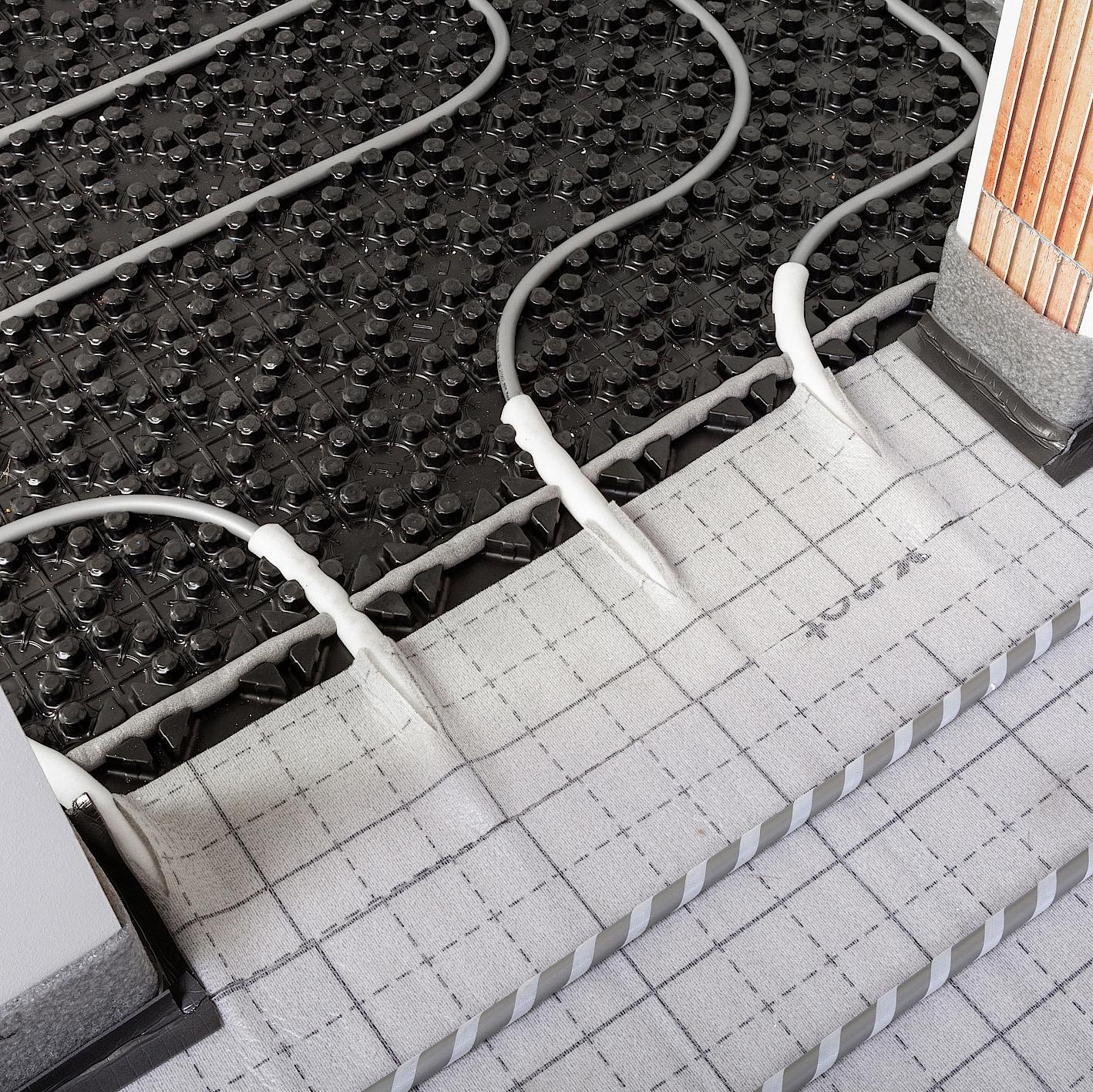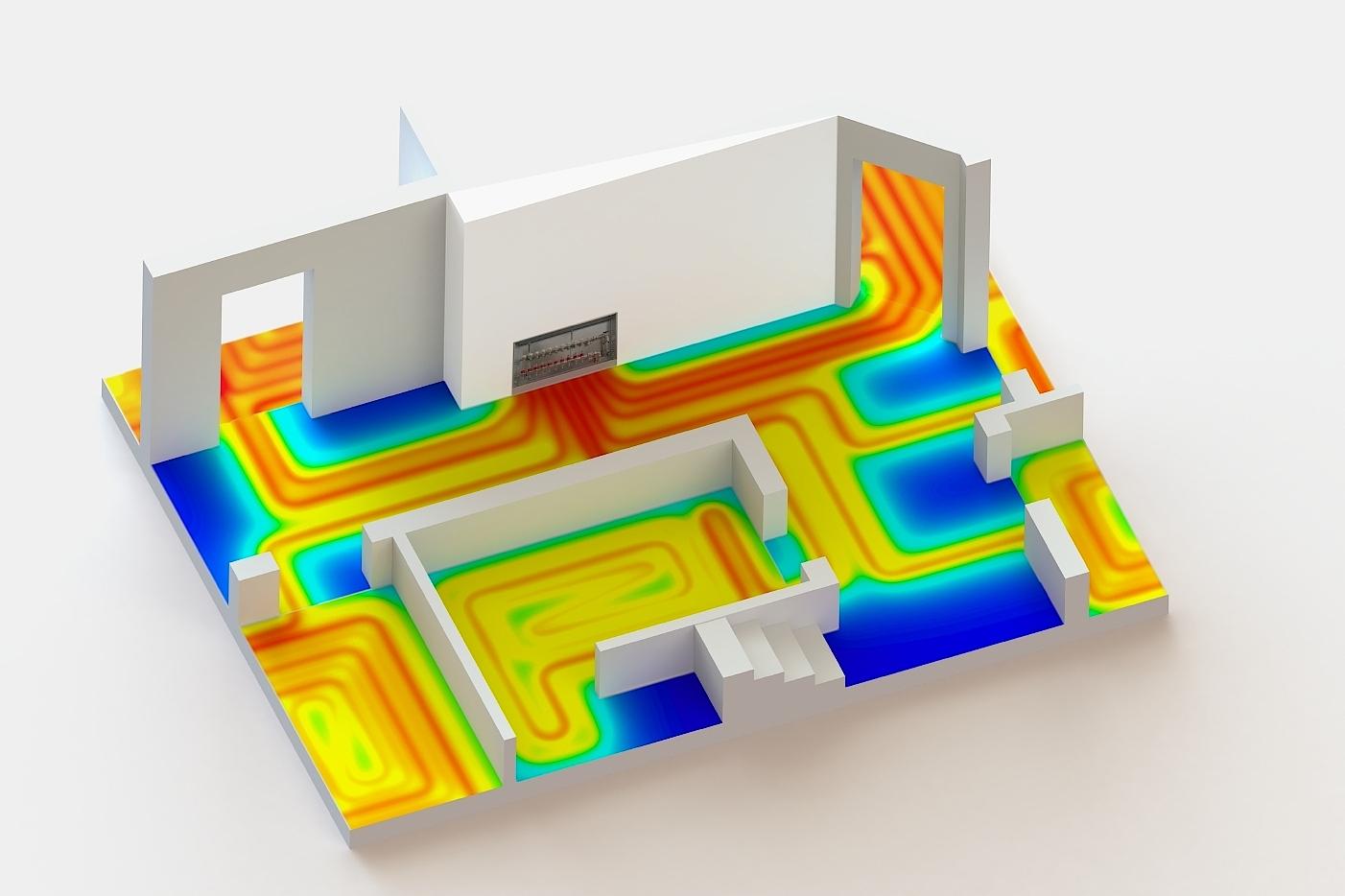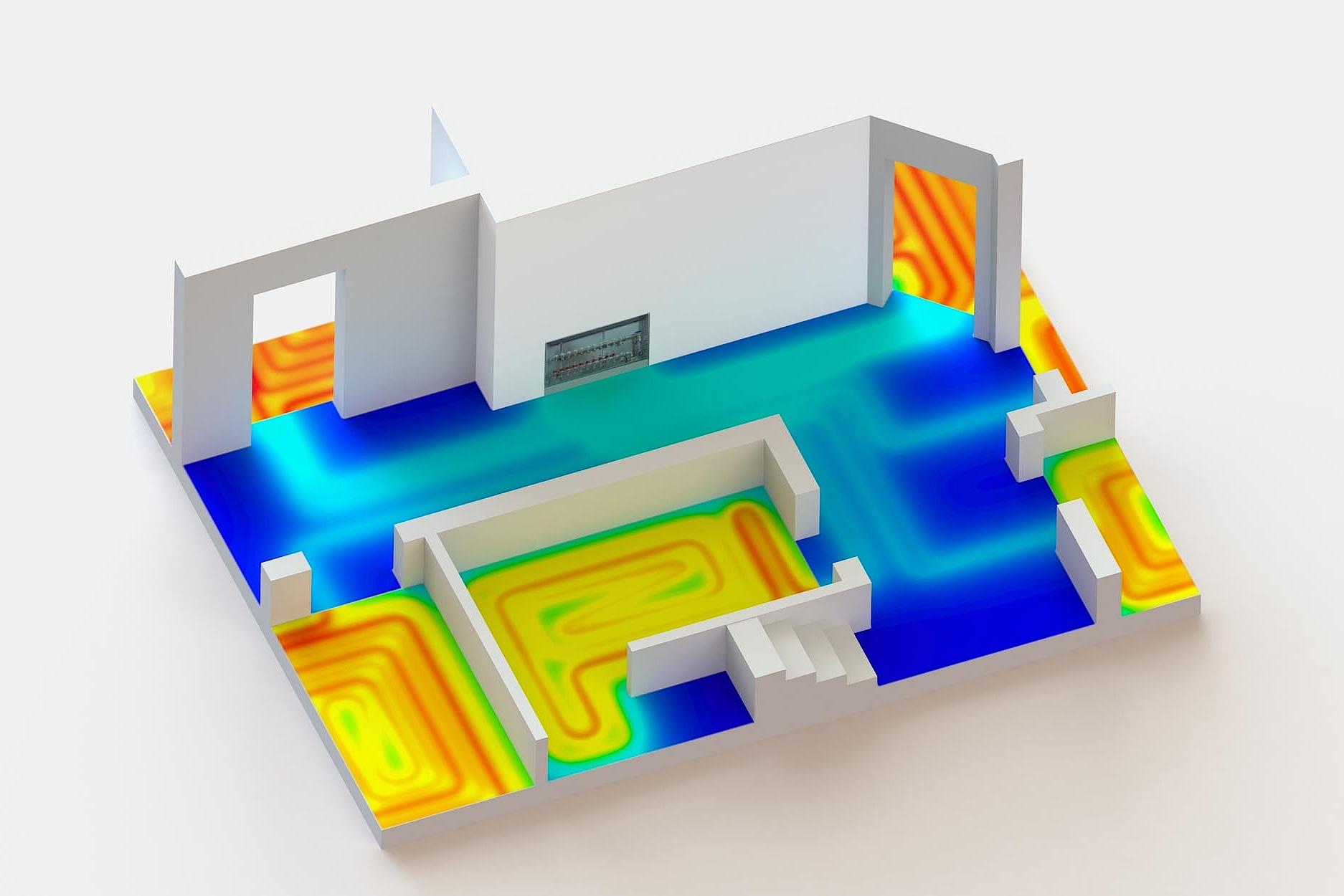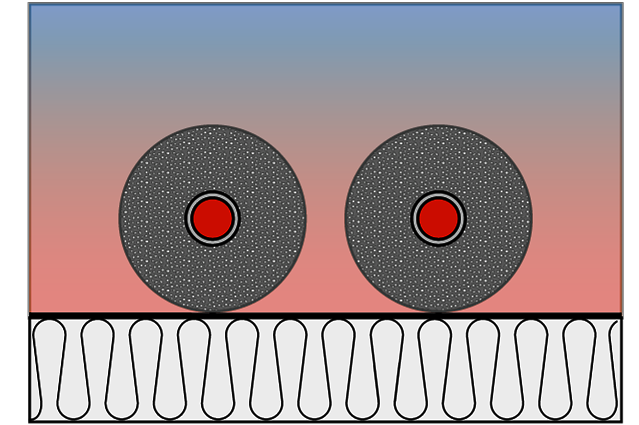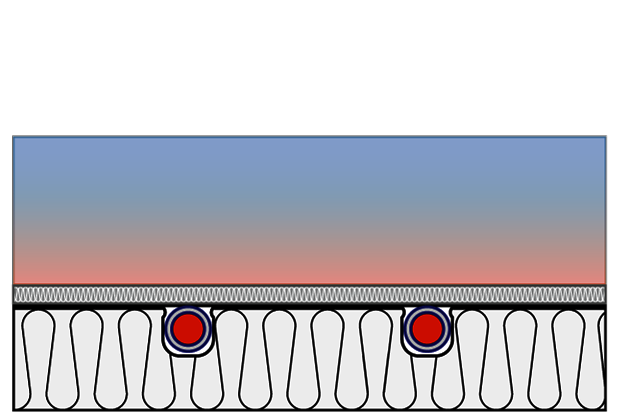x-net® connect systems
GEG-compliant underfloor heating in apartment hallways with increased impact sound protection
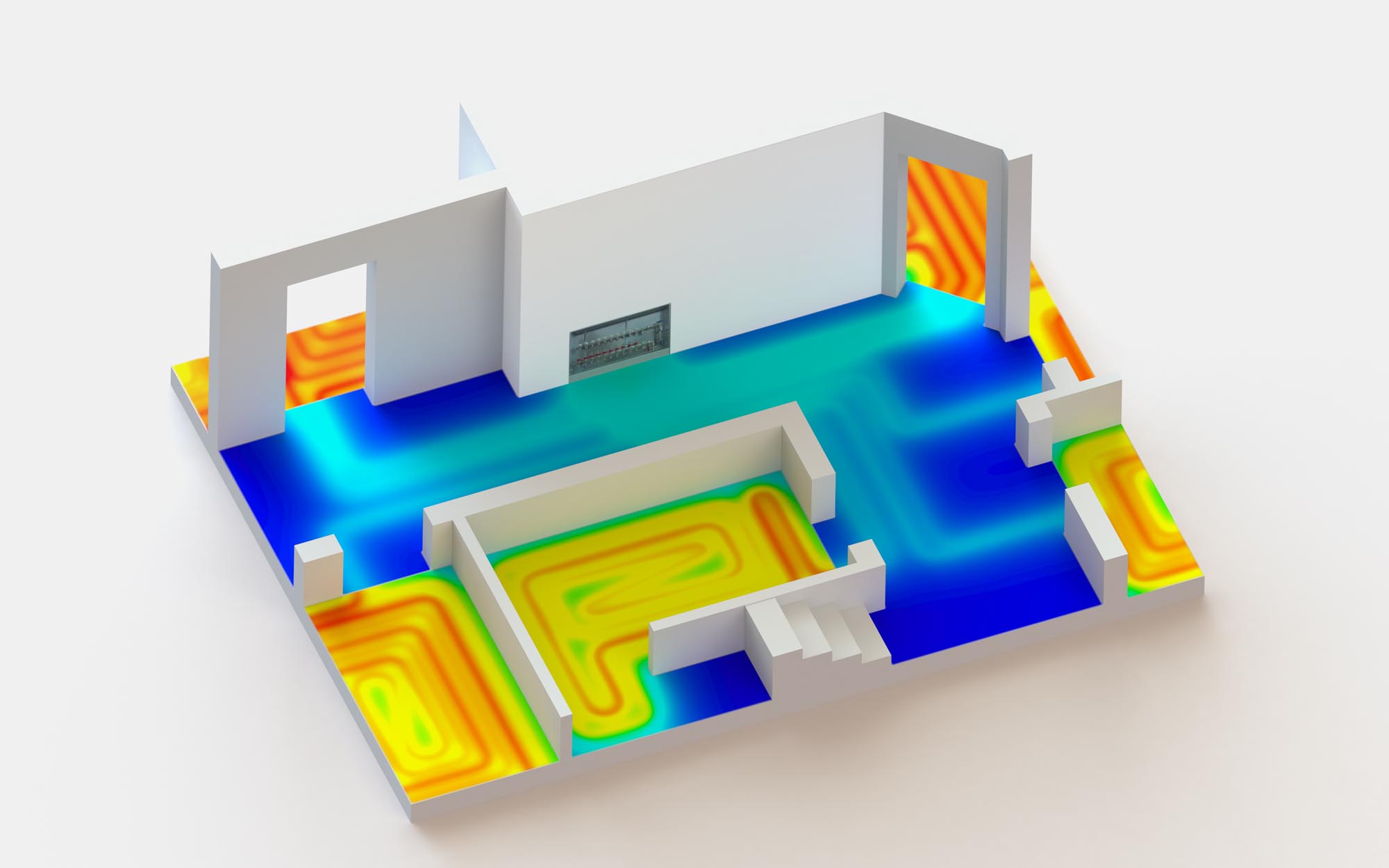
In the case of the x-net connect systems, the feed pipes passing through the connecting room are not embedded in the screed. Instead, these new connection systems carry them from the manifold in a special insulation layer underneath the screed, only allowing them to emerge in the screed layer at the point where they actually need to give off heat. Consequently, x-net connect systems carefully direct the heat underneath the screed as it passes through the hallway, for example.
Two problems, one solution
x-net connect systems
Problem 1:
Heat dissipation from the feed pipes that pass through.
Until now, feed pipes running from the underfloor heating manifold to the rooms have usually been embedded in the screed. Even if these feed pipes are covered with thermal insulation, they still emit heat to the screed in the connecting room they are passing through. As soon as an underfloor heating circuit becomes active, this connecting room gets heated – regardless of its own heat demand. The manifold is typically positioned in the hallway, for example, and this often results in the hallway becoming overheated. It is not possible to control the room temperature.
Solution 1:
x-net connect systems reduce the heat dissipation of these feed pipes much more effectively than a solution that relies on thermally insulated feed pipes in the screed. They achieve this by routing the pipes in the insulation layer underneath the screed, completely preventing overheating of the connecting room that the feed pipes pass through.
The impact sound protection remains fully in place thanks to the use of special system components.
As there is less heat loss on the way to the room that is being heated, the system temperature can be reduced. In turn, this increases the efficiency of the system, particularly when regenerative heat generators – such as heat pumps – are used
Problem 2:
Not enough space to install a controlled heating circuit in the connecting room.
If the underfloor heating manifold is installed in the connecting room and, at the same time, this room has comparatively little floor space, there is often barely any space or no space at all to install a separate heating circuit for the connecting room due to the feed pipes passing through it. As a result, it is not possible to meet the requirement for individually controllable rooms, as stipulated by Section 63 of the German Buildings Energy Act (GEG, GebäudeEnergieGesetz).
Solution 2:
x-net connect systems do not take up any of the installation space in the connecting room, allowing it to be fully occupied by a separately controllable heating circuit. This ensures that single room control can also be implemented for connecting rooms such as hallways, enabling the requirements of the German Buildings Energy Act (GEG) to be met in full.
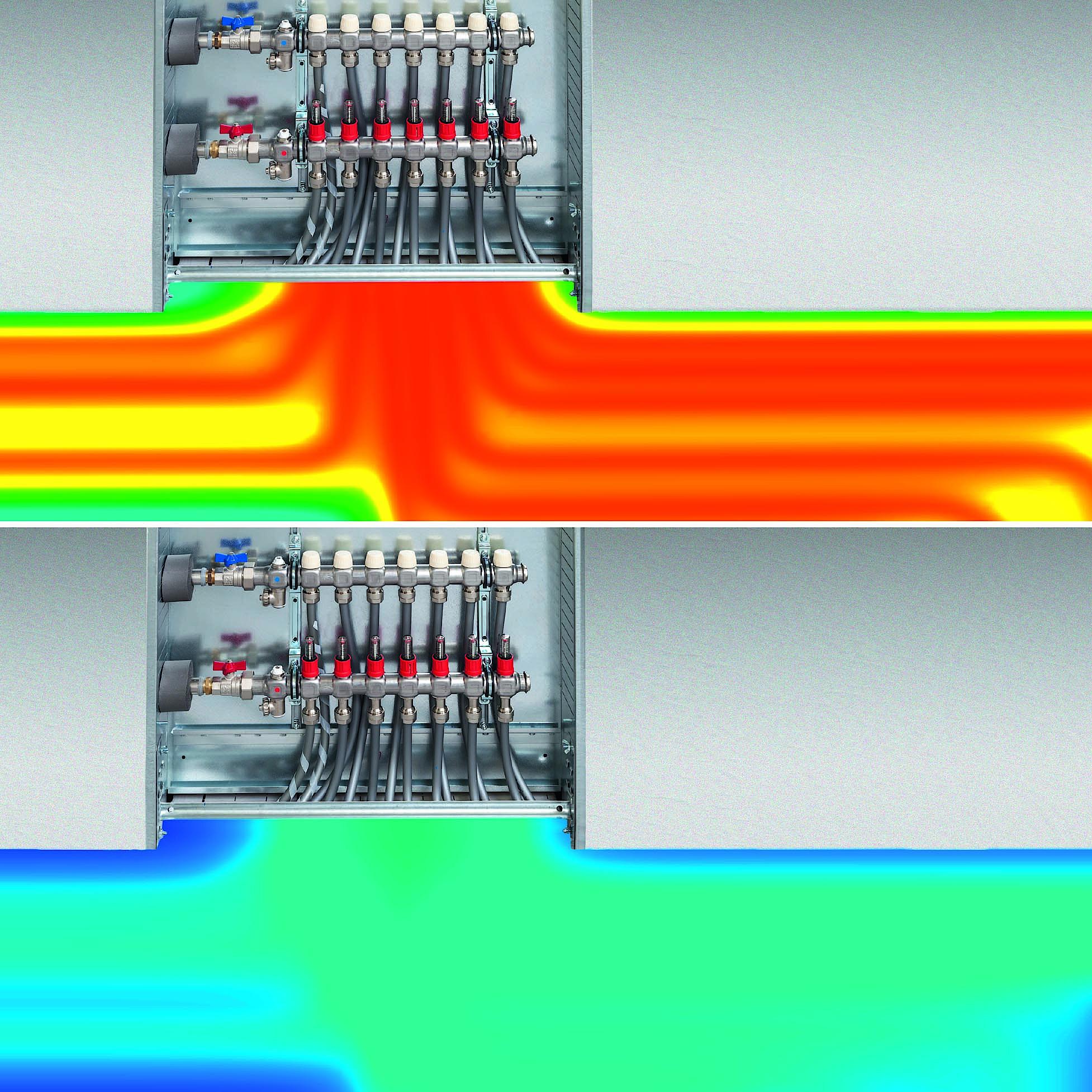
Advantages
- Implementation of single room control in line with the requirements of the German Buildings Energy Act (GEG)
- Impact sound reduction identical to EPS DES sm 30-2 (dynamic rigidity of 20 MN/m³)
- Increased impact sound protection in accordance with EPS DES sm 35-3
- Meets the increased sound insulation requirements according to VDI 4100
- Can be used for various x-net systems
- Quick and reliable handling
- Screed-tight pipe threading from the insulation layer into the screed layer thanks to special self-adhesive system components
- Allows absolute flexibility regarding pipe layout
Features
Kermi x-net connect and x-net connect plus, connection systems for feed pipes of the following x-net systems:
- x-net C11 knob system
- x-net C12 tacker system
- x-net C16 clip system
- +x-net C17 hook & loop system
The level of impact sound reduction on a solid ceiling is at least equal to that achieved with the EPS DES sm or EPS DES sm 35-3, as confirmed by an independent testing institute.
The insulation effect is comparable to that of 20 mm pipe insulation (WLG 035) when used to insulate a pipe embedded in the screed.
Thermal resistance of the connect insulation panels – incl. feed pipes and with connect cover – is > 0.75 m² W/K (thereby meeting the requirement for separation floors to be installed between uniformly heated rooms according to DIN EN 1264)
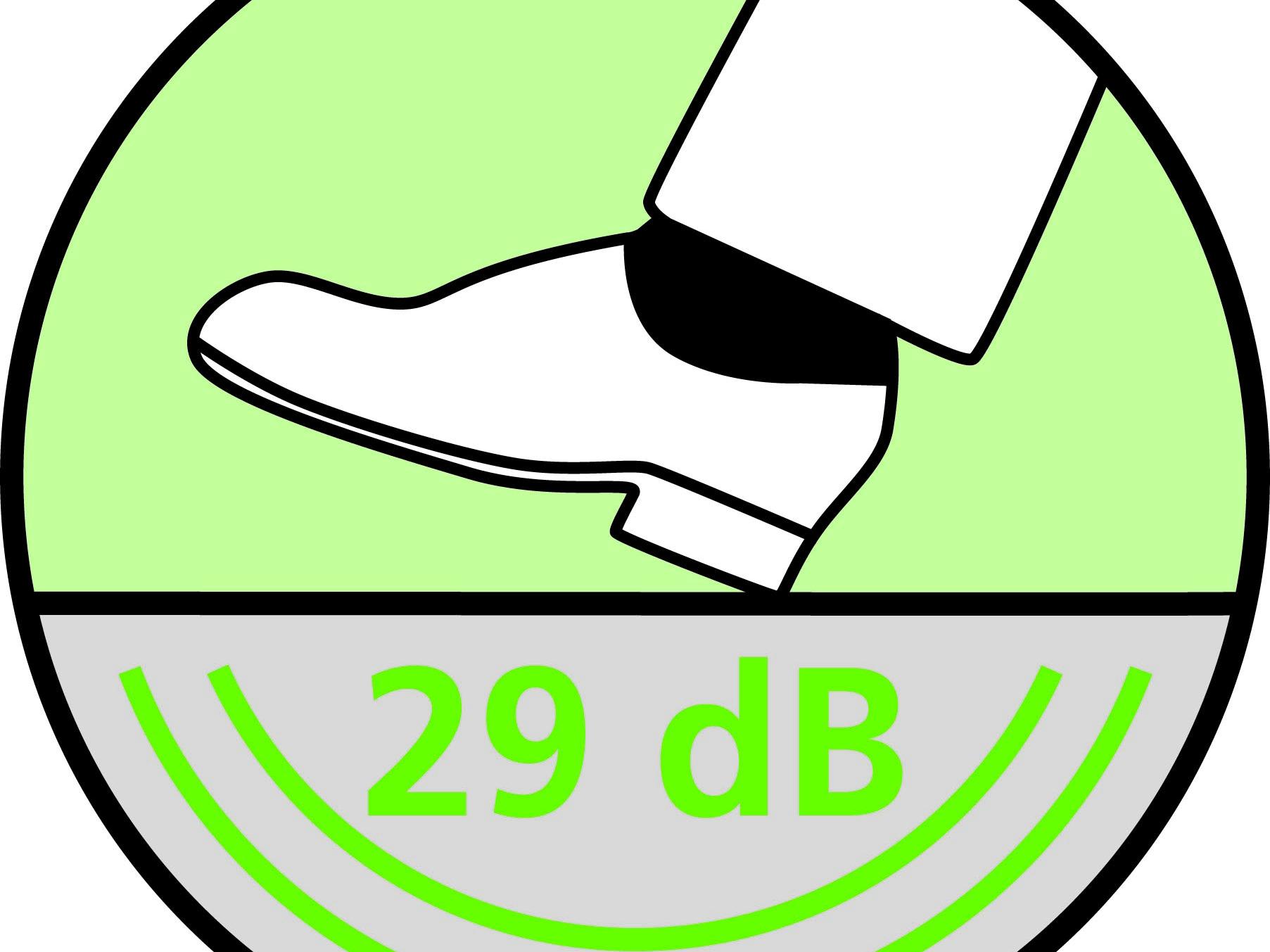
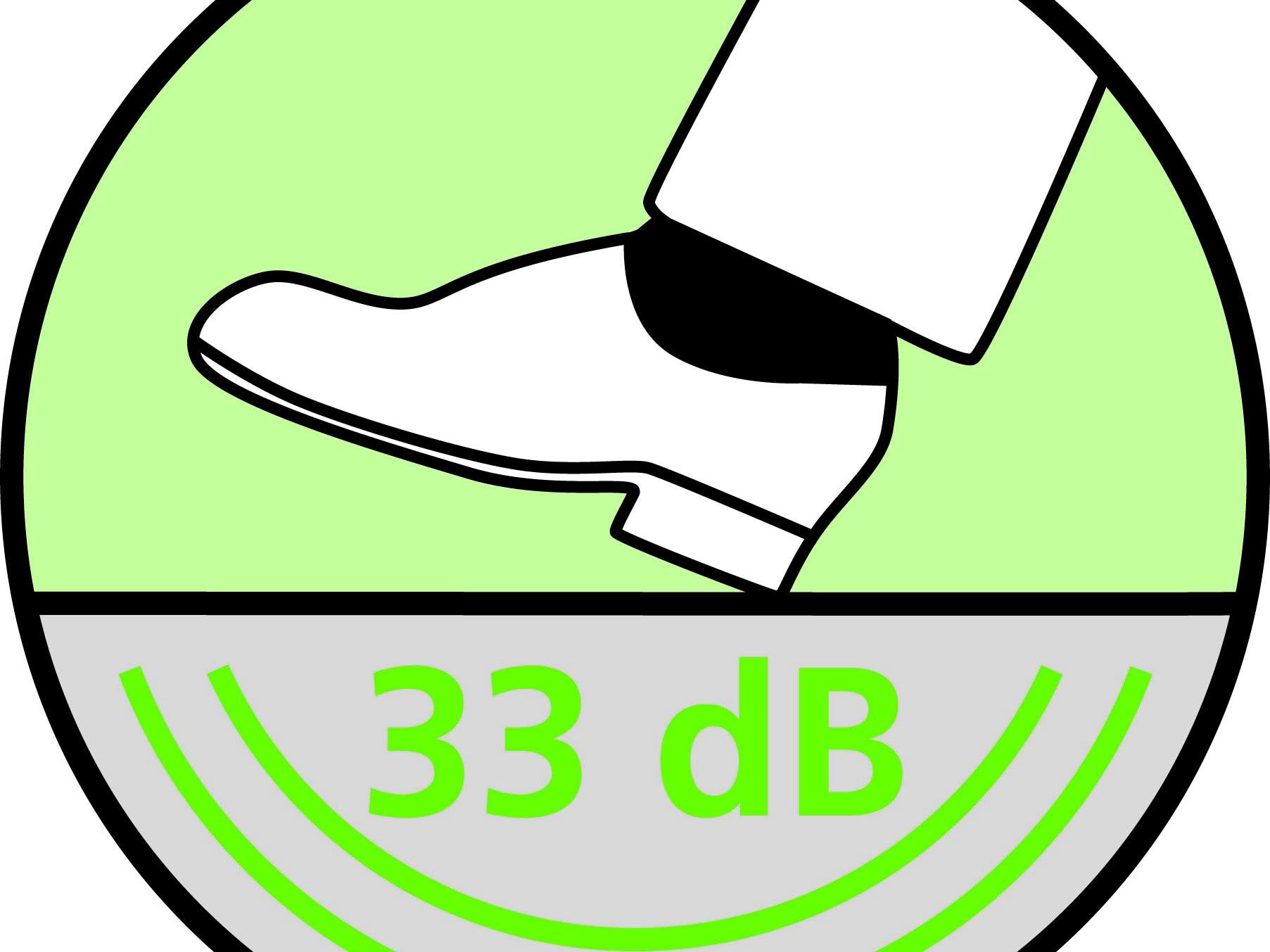
System description
In the case of the x-net connect systems, the feed pipes passing through the connecting room are not embedded in the screed. Instead, these new connection systems carry them from the manifold in a special insulation layer underneath the screed, only allowing them to emerge in the screed layer at the point where they actually need to give off heat. Consequently, x-net connect systems carefully direct the heat underneath the screed as it passes through the hallway, for example.
Thus, they reduce heat loss from the feed pipe as it passes through on its way to the room that needs to be heated and, in turn, the mass flow rate required for the heating circuit.
Any route can be selected for the pipe in the connect insulation layer, meaning that you can now select the shortest connecting path from the manifold to the room that needs to be heated. This reduces the length of the connecting pipes considerably.
In turn, these aspects also have a positive impact on the system hydraulics (pressure losses) and therefore on the required pump flow.
The underside of the x-net connect cover element is self-adhesive to enable quick installation and the top has a hook-and-loop surface so that pipes can be routed in different ways. When it is used in combination with the self-adhesive x-net pipe protection strips, screed-tight pipe threading is ensured.
x-net hook-and-loop pipes are used to create the separately controllable heating circuit on the x-net connect cover with printed installation grid.
This offers crucial benefits:
- The installation grid, which covers the entire surface, ensures that the heating circuit is implemented with the planned installation distance
- High pipe retention strength with variable routing of pipes
- Pipes can be laid quickly and easily, and independently of the feed pipes in the insulation layer
- No risk of the feed pipes getting pierced by inaccurately positioned pipe fixing elements
Insulation effect
Impact sound reduction
Impressive impact sound insulation with x-net connect and x-net connect plus
In the case of both the x-net connect (EPS DES sm 30-2) and x-net connect-plus (EPS DES sm 35-3) systems, the EPS thermal and impact sound insulation panels have the same impact sound reducing effect as the following types of Kermi standard tacker insulation when used with the x-net connect cover element made from polyethylene foam, even if incisions have been made in the pipe ducts: type EPS DES sm 30-2 with a dyn. rigidity of 20 MN/m³ and type EPS DES sm 35-3 with a dyn. rigidity of 10 MN/m³.
The impact sound improvement of the connect systems is ensured here even if the feed pipes passing through are arranged extremely closely together.
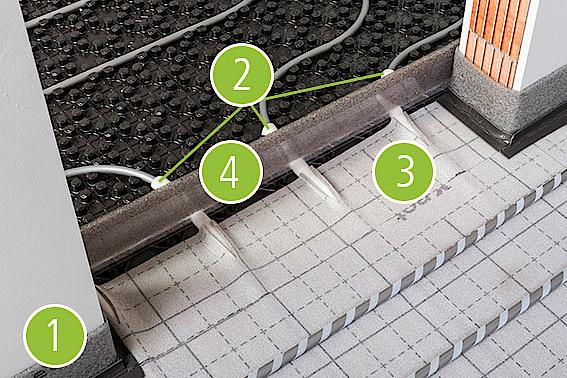
Sophisticated and installation-friendly detailed solutions for maximum security against unwanted noise transmission, particularly in the sensitive area where the pipe leaves the insulating layer and enters the screed layer.
- x-net edge insulation strip and x-net sealing tape
- x-net adhesive pipe protection strips to protect the pipes and seal the pipe guides
- x-net connect cover with impact sound reduction and full surface adhesion of the pipe penetration
- x-net expansion joint profile
Accessories
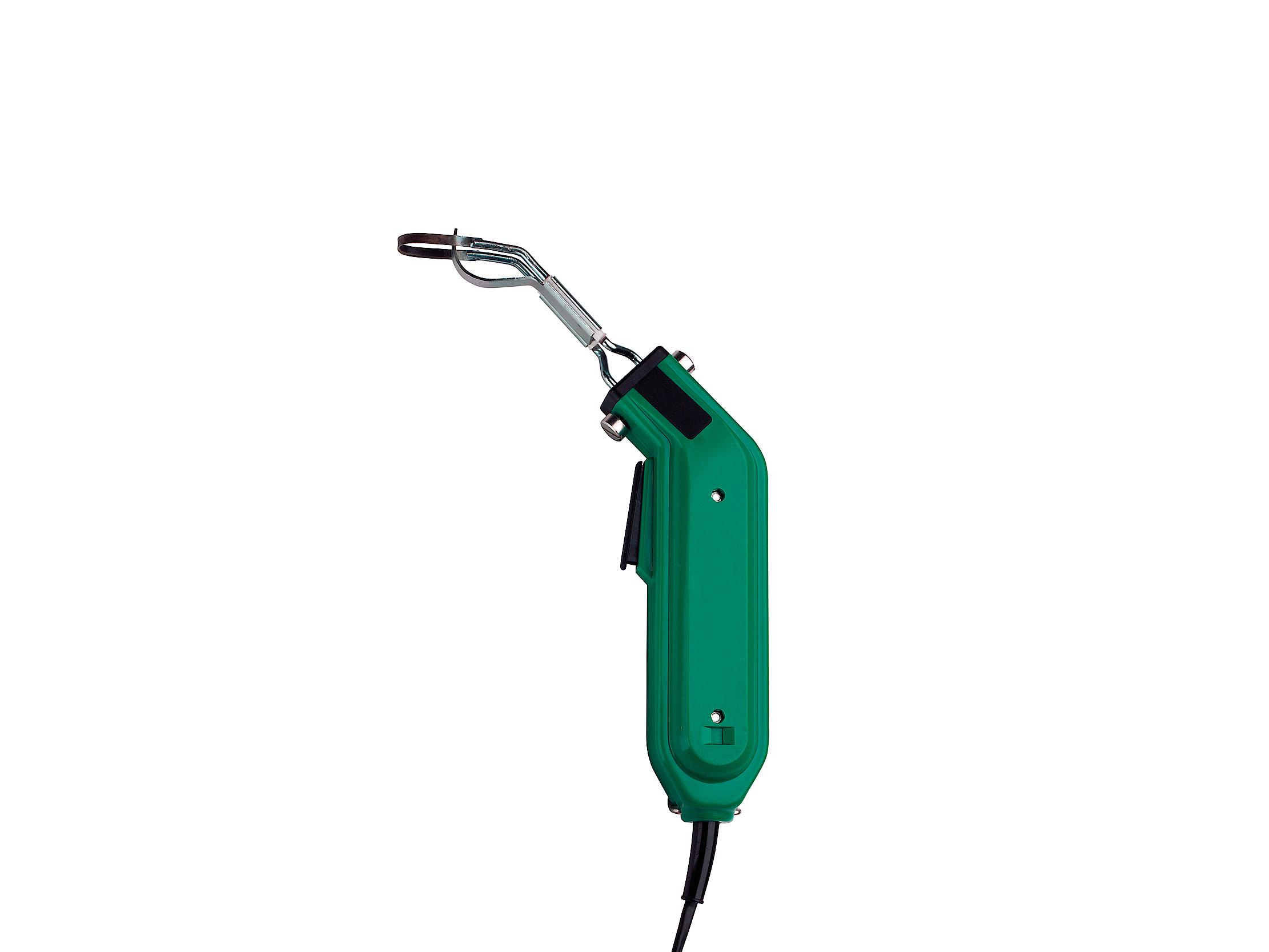
Documents
Kermi x-net connect installation video
Are you looking for a Kermi specialist partner near you?
With our search, you can find a specialist partner near you that can assist you with consultation plus exhibition, with planning or with consultation and installation.
